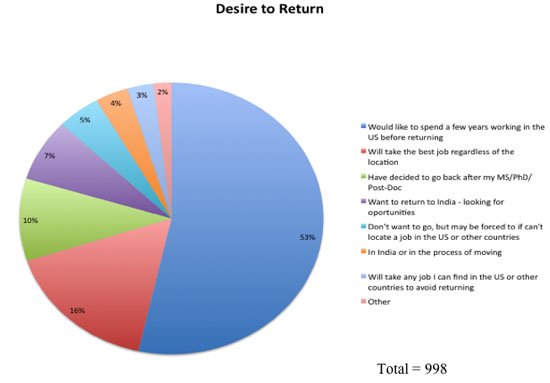Faculty shortages at Indian universities could be eased
NEW BRUNSWICK, N.J. – India needs to recruit at least one million new faculty members for its college and universities if it is to meet the government’s goal of making higher education available to 20 percent of young people by 2020. A new study released today by Rutgers University, Pennsylvania State University and the Tata Institute of Social Sciences (TISS) suggests that India may be able to recruit some of the academic talent it needs from the more than 100,000 Indians currently studying in the United States.The study surveyed nearly 1,000 Indians who are either pursuing or have completed graduate study in the U.S. and found that only 8 percent strongly prefer to remain in the U.S. The remainder are either planning to return to India (preferably after some work experience abroad), or are undecided. The study finds the biggest factors deterring master’s, Ph.D. students, and post docs from returning to India are red tape, corruption, and absence of research opportunities.
“The results are surprising and encouraging for Indian universities,” said David Finegold, dean of the Rutgers’ School of Management and Labor Relations, and one of the study’s authors.
“We expected that more students would lean heavily toward remaining in the U.S. But our results suggest many young academics would be interested in pursuing a faculty career in India, if policymakers can address some of the key issues facing the Indian higher education system. ”

The study identified four key factors affecting the decision to return to India:
Factor 1: Quality of life- Standard of living
- Housing
- Quality of life
- Comfort with society/culture
- Career growth opportunities
- Support for research/Opportunities to publish
- Chance to secure a good first job
- Amount of Red Tape
- Corruption
- Giving back to the motherland
- Help build Indian higher education system
Just one of these four factors – the desire to give back – is strongly associated with a desire to return to India.
“Soon, the Indian Parliament will be debating the several landmark proposals for higher education reforms including the Foreign Universities Bill, which the current government is keen on implementing,” said Dr. B. Venkatesh Kumar, a co-author of the study who is a Professor at TISS in Mumbai and visiting Penn State this year as a Humphrey Fellow. “This study suggests some concrete steps that the government can take to address the large and chronic shortages of qualified faculty in India.”
The authors offer a number of proposals that could help India attract new faculty, including creating a new Teach for India Higher Education fellowship program to provide two- to three-year teaching positions for recent U.S. PhD graduates. This could have the twin benefit of filling faculty shortages in India and helping new PhDs in the U.S. who are struggling with a tight job market caused by cutbacks in public higher education. Other policy proposals include:
- Develop leaders for Indian higher education
- Improve India’s academic talent pipeline
- Enhance the quality and transparency of higher education governance
- Provide research opportunities for as many faculty as possible
- Raise the quality of state universities and private colleges
- Provide government-sponsored graduate fellowships
- Improve the staffing process in Indian universities
Media Contact: John Chadwick
732-932-7084, ext. 615
E-mail: jchadwick@ur.rutgers.edu